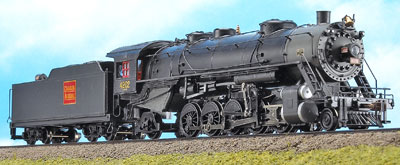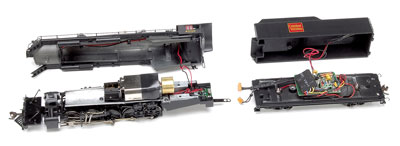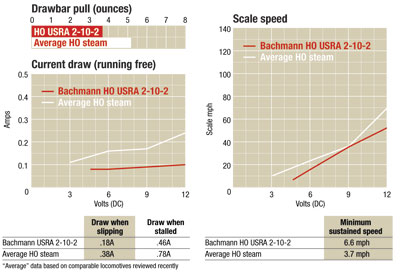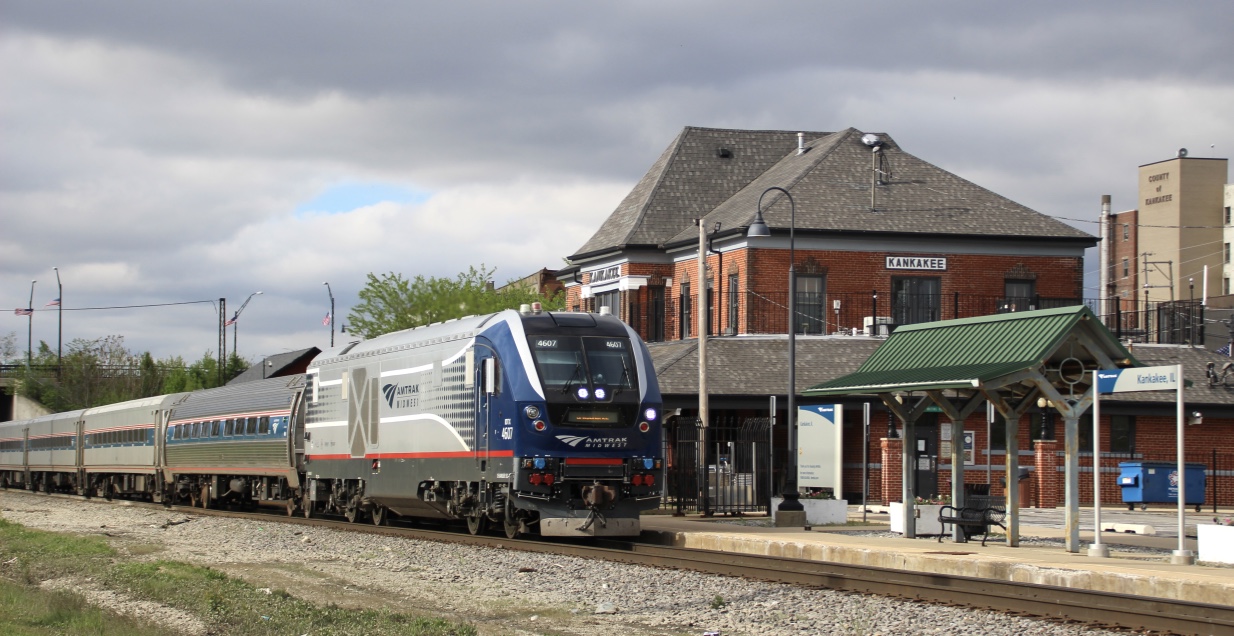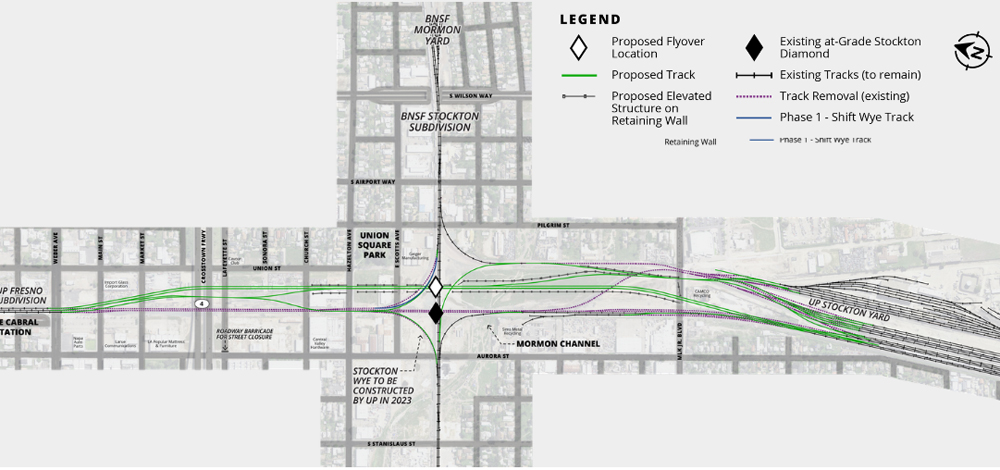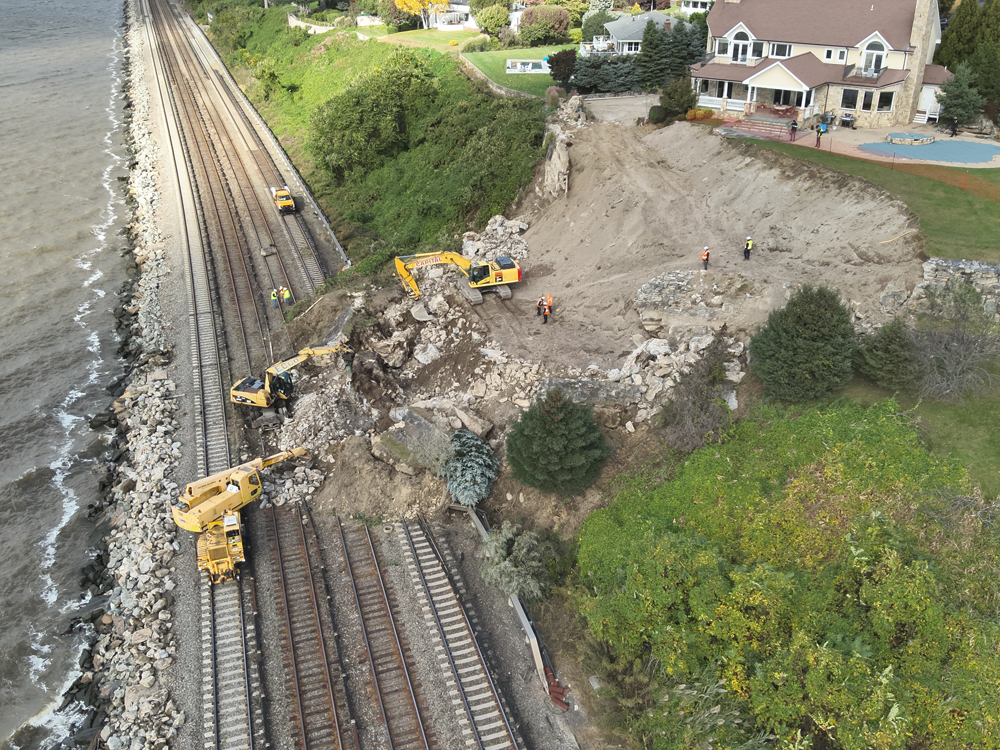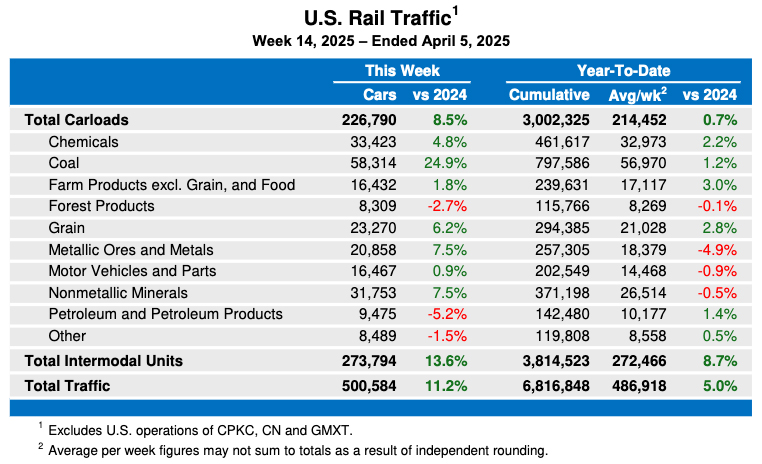The prototype for this 2-10-2 Santa Fe type was designed by the United States Railroad Administration (USRA) while the government controlled the nation’s railroads during World War I. This locomotive was designed as a drag engine in an era when speed wasn’t considered as important as pulling power, so it was the second largest rigid-frame locomotive in the USRA’s series of standard locomotives (the heavy 2-10-2 outweighed it).
All 94 of the light 2-10-2s were built by Alco and Baldwin in 1918 and 1919. The initial 50 locomotives were assigned to the Southern Ry.; then 15 went to the Seaboard Air Line, 10 to the Boston & Albany (sold to Canadian National in 1928), 10 to the Duluth, Missabe & Northern (predecessor of the Duluth, Missabe & Iron Range), 5 to the Chicago & Western Indiana (for its subsidiary, the Belt Ry. of Chicago), and 4 to the Ann Arbor RR.
Bachmann’s model of the light 2-10-2 is a credible replica of its prototype. It closely matches the dimensions shown in the USRA drawings published in Simmons- Boardman’s 1922 Locomotive Cyclopedia, including the locomotive’s overall wheelbase. Even though this is a USRA standard locomotive, there are six different models offered with prototype-specific details. These detail variations reflect modifications the owners made during the 2-10-2s’ long service lives. A well- illustrated instruction sheet has more than two dozen exploded isometric drawings that show all of these alternate parts. A standard USRA boiler and cab is fitted with a choice of four boiler fronts and two types of running boards and handrails. The basic mechanism is assembled with either Southern or Walschaerts valve gear, spoked or Boxpok main (center) drivers, and a Delta or Hodges trailing truck. There are four different tender bodies made with high, low, and narrow coal bunkers, and an oil fuel version.
The plastic tender bodies are based on railroad modifications of the USRA standard long version. They all have a die-cast metal floor and four-wheel Andrews trucks.
An automatic dual-mode DCC decoder is concealed inside the tender and connected to an NMRA eight-pin socket. Six wires connect the tender to the locomotive; the decoder offers directional lighting control but no sound. There’s sufficient space within the tender to substitute a DCC sound decoder, but the speaker would probably have to go in the coal bunker.
Our 2-10-2 came smoothly painted in matte black with a graphite firebox and smokebox. The printed Canadian National markings on the cab and two-color herald on the tender were neatly applied. The back of the tender also has the correct tender fuel and water capacities.
The mechanism. This model is one of the few large steam locomotives I’ve seen that has the correct prototype wheelbase. The combination of small drivers (scale 57″) spaced on 75″ centers provides operating clearance for the model’s RP-25 wheel flanges. In addition, the lead and trailing truck wheels are the proper size, and they’re also spaced on the correct centers.
The die-cast metal chassis has a five-pole can motor mounted in the firebox. An acetal plastic gearbox connects the worm and gear drive to the middle driver; the side rods power the other drivers. The middle set of drivers is correctly blind (no flanges), and the others have some lateral motion so the model can run on curves as sharp as 18″ radius, but it’ll look better operating on wider curves.
All ten drivers and four tender wheels pick up current. Each driver is insulated from its axle, so sets of tiny contacts collect current from all the wheels.
On DCC, the 2-10-2’s speed range was nearly identical to its DC performance, except for an amazing slow speed. It started moving at a barely perceptible .3 scale mph; this was so slow that we had to stare at a tie to see the locomotive move!
There are no traction tires, but the 2-10-2 produced sufficient tractive effort to pull 52 free-rolling cars on straight and level track.
Bachmann’s new USRA light 2-10-2 offers good looks and excellent performance.
Price: $225 with dual-mode DCC decoder (without sound)
Manufacturer
Bachmann Industries Inc.
1400 E. Erie St.
Philadelphia, PA 19124
www.bachmanntrains.com
Description
Plastic and die-cast metal ready-to-run steam freight locomotive
Road names (two numbers in each paint scheme):
Canadian National; Chicago & Illinois Midland; Duluth, Missabe & Iron Range; Kansas City Southern; Seaboard Air Line; Southern Ry.; and painted but unlettered
Amber light-emitting-diode headlight and backup light, reversing, with constant brightness
Automatic dual-mode DCC (Digital Command Control) decoder that also operates on DC layouts
Bachmann E-Z Mate couplers, mounted at correct height
Die-cast metal boiler and frame
Drawbar pull: 3.7 ounces, 52 free-rolling freight cars on straight, level track
Engine and tender weight: 20 ounces (engine alone is 15 ounces)
Minimum radius: 18″
NMRA RP-25 contour nickel-silver wheels, painted black
Prototype-specific details





